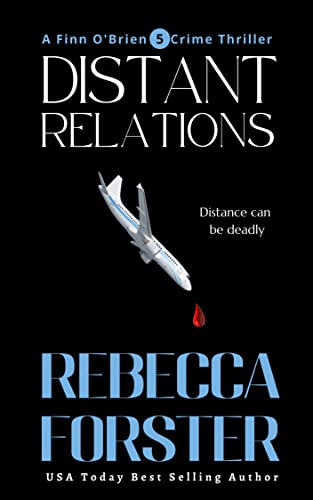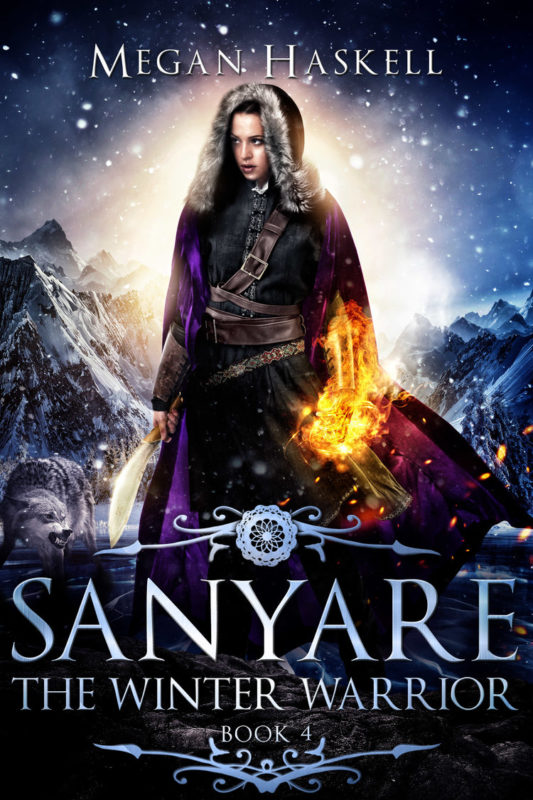I preach Like With Like to my critique partners all the time and once in a while, they remind me to practice what I preach. So what do I mean by like with like? It’s not as easy to explain on paper as it is to point out the mistake in a WIP but here goes.
Like with like has to do with story flow.
I’m certain we’ve all read drafts and realized a certain tidbit of information was in the wrong place. It interrupts the flow of the scene and the action. Think of this interruption as a speed bump in the middle of a race track. If a race car were to hit one it would spin out of the action.
These speed bumps are not to be confused with a data dump, sections of lengthy description, background or character internalization that detour a reader off the path before returning them to the action.
Speed bumps are misplaced bits of information that amount to a word or a couple of sentences that need to be cut and pasted elsewhere. They’re more jarring than data dumps because they pop up out of nowhere. Readers may even reread a section or two because they feel they might’ve missed something.
So what causes speed bumps?
Here’s the kicker. To avoid data dumps, writers are told to dribble information throughout the story. However, dribbling it into the wrong spot creates a speed bump.
Let’s say a scene opens like this – excuse the paraphrasing:
Tom the race driver settles into his car. As a reader we’re riding shot gun, hearing Tom’s thoughts, seeing the inside of his car and watching him perform all his checks before the race. Then he takes his place on the track. The flag is waved and we’re off!
Tom is dodging spinouts, speeding faster and faster and trying to get around Don Dingbat in car number 4. Tom thinks: Dang, that Don. The man will do anything to win, even if it gets another driver killed. Last month, he caused a three car pileup that put two drivers in the hospital.
Caboom!
No, the car didn’t crash. Tom is still flying around the track. The reader, however, was thrown through the windshield.
Okay, this is a silly example, but you get the picture. Readers would have remained in the car for the thrill of the ride, but segueing into Don’s character background tossed them out of the action or in this case the race.
If Tom had seen Don pass by before the race or during his systems check, the info wouldn’t have been so jarring. Don Dingbat needs to make an appearance at the beginning of the scene along with the rest of the set-up information. Like With Like. Another solution might be to paste the rivalry between the two men at the end of the race where perhaps they air their differences.
Let’s try this again:
Tom settles into his car and is checking out the dashboard like the cockpit of a Leer jet. Through his windshield he spies Don Dingbat getting into his car. Tom Thinks: The man’s a wild card, a danger to every man on the track. He’d do anything to win a race and usually got away with it too. Last month, he’d caused a three car pileup that put two drivers in the hospital. Tom scowls and yanks his safety belt across his body. This is one race Don Dingbat will not win.
The flag is waved and we’re off!
Tom dodges spinouts, speeding faster and faster as he tries to pass Don in car number 4. Don swerves back and forth across the track trying to hold his place. Tom races around hairpin curves, steadily moving ahead of the other drivers. It’s an exciting ride and in the end Tom flies over the finish line ahead of Don, and the reader is still sitting right beside him.
In the second example we pasted the speed bump into the set up scene. Doing so actually enhances the action because now the reader is invested in the race. He/she wants to see Tom win and Don lose. The actual action/race was not interrupted. Details about both men can be dribbled in as the story proceeds. No data dump and no speed bumps.
Not every scene is an intense action scene like a car race, a police chase or even an Indian uprising. But in every scene something is happening. Conversation/dialogue and internalization may not be as exciting, but they are a form or action and speed bumps are just as jarring in these types of scenes. Be on the lookout.
Split descriptions are one of the most common and overlooked of speed bumps. For instance, a character walks on stage and the writer describes him through another character’s POV. A few paragraphs later, another description is stuck in that really could’ve been linked to the original. Sometimes a scenic description or the detailing of a room or building layout surprises readers because down the page an unexpected extra detail pops up out of nowhere.
On top of their jarring nature, split descriptions often steal the power of the words. Read the following example.
The air shifted and teacher, Peter Hunk, glanced toward the door. A woman stood there, scanning his classroom. She was so beautiful she seemed a figment of his imagination. A gossamer dress better suited for a wedding than a classroom draped her petite form and short jet hair cupped the perfect oval of her face. Then her head jerked in his direction, her unusual eyes flashing with anger . . .
Blah blah blah . . . the woman gives Peter a piece of her mind, and he doesn’t understand what she’s talking about. Down the page we go. And Peter Hunk thinks it’s a shame she sounds so nuts because under different circumstances, he’d definitely ask her out. He hadn’t even heard her first words because he’d become lost in her eyes, eyes so striking they were almost spooky. It was like looking upon lovely blue lace curtains, then green and no, brown. But how could that be . . .
On the first read, this type of speed bump isn’t always as noticeable as the one in the race car example, but a smart reader, will stop and say, “Huh? When did that happen?â€
Remember, the revelation about the woman’s eyes is half a page or more from the paragraph where she walked on stage. If the woman’s eyes had been normal, when she walked into the room, Peter wouldn’t have noticed them except for maybe their color and their angry expression. That wasn’t the case. Peter did notice they were unusual. So we must keep like with like.
The air shifted and teacher, Peter Hunk, glanced toward the door. A woman stood there, scanning his classroom. She was so beautiful she seemed a figment of his imagination. A gossamer dress better suited for a wedding than a classroom draped her petite form, and short jet hair cupped the perfect oval of her face. Her head jerked in his direction and he started. Anger flashed in her eyes, eyes so striking they were almost spooky. It was like looking through lovely blue lace curtains, then green … no, brown. But how could that be? Who was she? . . .
He started, realizing the woman was yelling gibberish at him . . . And now Peter Hunk listens to the gibberish and we get his reaction and so forth without interruption.
Moving the eye description delivers a more powerful description in that it screams to the reader, “Whoa, there’s something woo-woo about this woman.â€
The good thing about speed bumps is that they’re an easy fix. While not all of them will fit into a set-up scene, most can be eliminated with a simple cut and paste to another location.
I hope my examples, silly as they are, illustrate how keeping like with like improves the flow of a scene. If you have more examples or questions, please share them with us in a comment below.
- Author Details
- Books on Sale
- New Releases
- Contact Us
- Be in the Spotlight
Books on sale or free

Related
Affiliate Links
A Slice of Orange is an affiliate with some of the booksellers listed on this website, including Barnes & Nobel, Books A Million, iBooks, Kobo, and Smashwords. This means A Slice of Orange may earn a small advertising fee from sales made through the links used on this website. There are reminders of these affiliate links on the pages for individual books.
Search A Slice of Orange
Find a Column
Archives
Featured Books
LAIRD OF STEEL
Gellir faces the one intrepid warrior he may not be able to conquer.
More info →DISTANT RELATIONS
Finn's life is in the hands of a distant and deadly relation.
More info →SANYARE: THE WINTER WARRIOR
Her choice won the war, but may have cost her everything…
More info →FOREIGN RELATIONS
A foreign woman is dead, two countries want her forgotten. Detective Finn O'Brien wants justice.
More info →Newsletter
Contributing Authors
Search A Slice of Orange
Find a Column
Archives
Authors in the Bookstore
- A. E. Decker
- A. J. Scudiere
- A.J. Sidransky
- Abby Collette
- Alanna Lucus
- Albert Marrin
- Alice Duncan
- Alina K. Field
- Alison Green Myers
- Andi Lawrencovna
- Andrew C Raiford
- Angela Pryce
- Aviva Vaughn
- Barbara Ankrum
- Bethlehem Writers Group, LLC
- Carol L. Wright
- Celeste Barclay
- Christina Alexandra
- Christopher D. Ochs
- Claire Davon
- Claire Naden
- Courtnee Turner Hoyle
- Courtney Annicchiarico
- D. Lieber
- Daniel V. Meier Jr.
- Debra Dixon
- Debra H. Goldstein
- Debra Holland
- Dee Ann Palmer
- Denise M. Colby
- Diane Benefiel
- Diane Sismour
- Dianna Sinovic
- DT Krippene
- E.B. Dawson
- Emilie Dallaire
- Emily Brightwell
- Emily PW Murphy
- Fae Rowen
- Faith L. Justice
- Frances Amati
- Geralyn Corcillo
- Glynnis Campbell
- Greg Jolley
- H. O. Charles
- Jaclyn Roché
- Jacqueline Diamond
- Janet Lynn and Will Zeilinger
- Jaya Mehta
- Jeff Baird
- Jenna Barwin
- Jenne Kern
- Jennifer D. Bokal
- Jennifer Lyon
- Jerome W. McFadden
- Jill Piscitello
- Jina Bacarr
- Jo A. Hiestand
- Jodi Bogert
- Jolina Petersheim
- Jonathan Maberry
- Joy Allyson
- Judy Duarte
- Justin Murphy
- Justine Davis
- Kat Martin
- Kidd Wadsworth
- Kitty Bucholtz
- Kristy Tate
- Larry Deibert
- Larry Hamilton
- Laura Drake
- Laurie Stevens
- Leslie Knowles
- Li-Ying Lundquist
- Linda Carroll-Bradd
- Linda Lappin
- Linda McLaughlin
- Linda O. Johnston
- Lisa Preston
- Lolo Paige
- Loran Holt
- Lynette M. Burrows
- Lyssa Kay Adams
- Madeline Ash
- Margarita Engle
- Marguerite Quantaine
- Marianne H. Donley
- Mary Castillo
- Maureen Klovers
- Megan Haskell
- Melanie Waterbury
- Melisa Rivero
- Melissa Chambers
- Melodie Winawer
- Meriam Wilhelm
- Mikel J. Wilson
- Mindy Neff
- Monica McCabe
- Nancy Brashear
- Neetu Malik
- Nikki Prince
- Once Upon Anthologies
- Paula Gail Benson
- Penny Reid
- Peter Barbour
- Priscilla Oliveras
- R. H. Kohno
- Rachel Hailey
- Ralph Hieb
- Ramcy Diek
- Ransom Stephens
- Rebecca Forster
- Renae Wrich
- Roxy Matthews
- Ryder Hunte Clancy
- Sally Paradysz
- Sheila Colón-Bagley
- Simone de Muñoz
- Sophie Barnes
- Susan Kaye Quinn
- Susan Lynn Meyer
- Susan Squires
- T. D. Fox
- Tara C. Allred
- Tara Lain
- Tari Lynn Jewett
- Terri Osburn
- Tracy Reed
- Vera Jane Cook
- Vicki Crum
- Writing Something Romantic
Affiliate Links
A Slice of Orange is an affiliate with some of the booksellers listed on this website, including Barnes & Nobel, Books A Million, iBooks, Kobo, and Smashwords. This means A Slice of Orange may earn a small advertising fee from sales made through the links used on this website. There are reminders of these affiliate links on the pages for individual books.

































































































































Great blog. This is such a timely blog since I plotting my new novel and have to make sure to put like with like. Very informative.